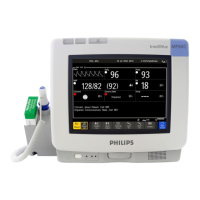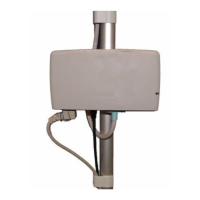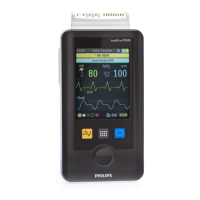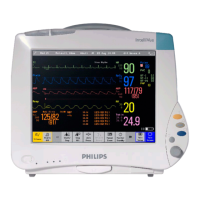Clinical Applications
1-32 Introducing the IntelliVue Information Center System
available as an option for both systems, but it is not required when used with the Information
Center because the Philips system provides ST Segment analysis of telemetry data as a
standard feature.
Figure 1-20 Telemetry Systems for Information Center Monitoring
Alarm
Annunciation
Information Center software also provides extensive alarm annunciation capability and
flexibility. Alarm events are detected by comparing physiological data against preconfigured
limit values. Alarms detected by Information Center software include:
• Arrhythmia alarms (for data from both bedside and telemetry monitors)
• ST Segment alarms (for data from telemetry monitors only)
Note The Information Center displays alarm events that it detects as well as those generated by
networked monitors. However, the Information Center only controls alarm limits and on/off
status for alarms that it detects.
Priorities Information Center software prioitizes alarms into 3 levels of severity:
• Red *** life threatening (e.g. Asystole)
• Yellow ** alarm limit exceeded (e.g. high heart rate)
• Cyan inoperative (INOP) condition (e.g. patient leads off)
Annunciation Alarms are announced by the following indicators:
• Patient Sector turns blue (Red and Yellow alarms only)
• Alarm Tone sounds that indicates the alarm severity (no sound for soft INOPs)
• Alarm message is displayed in Patient Sector and Patient Window of the same color
as the alarm.
– For rate alarms, the message indicates:
— parameter in alarm
— maximum or minimum value of that parameter
— alarm limit that was violated (e.g. HR 134>120)
– For event alarms, the message indicates the event that caused the alarm (e.g.
Asystole)
M1403A/J Digital UHF
Telemetry System
M2600 Philips
Telemetry System

